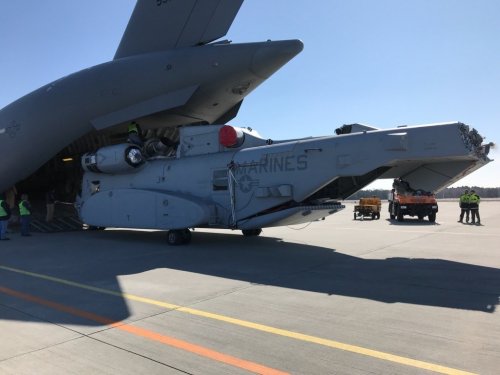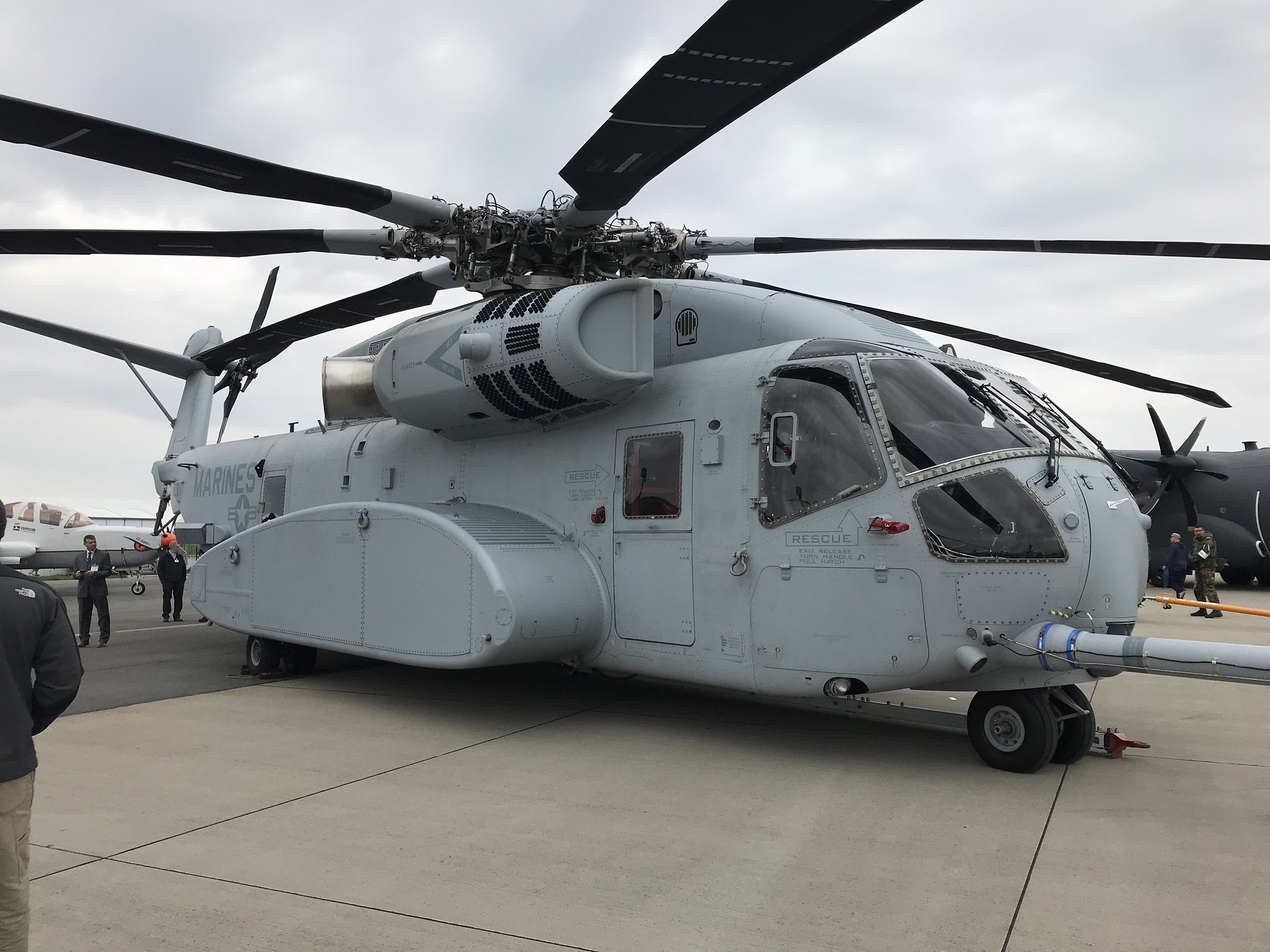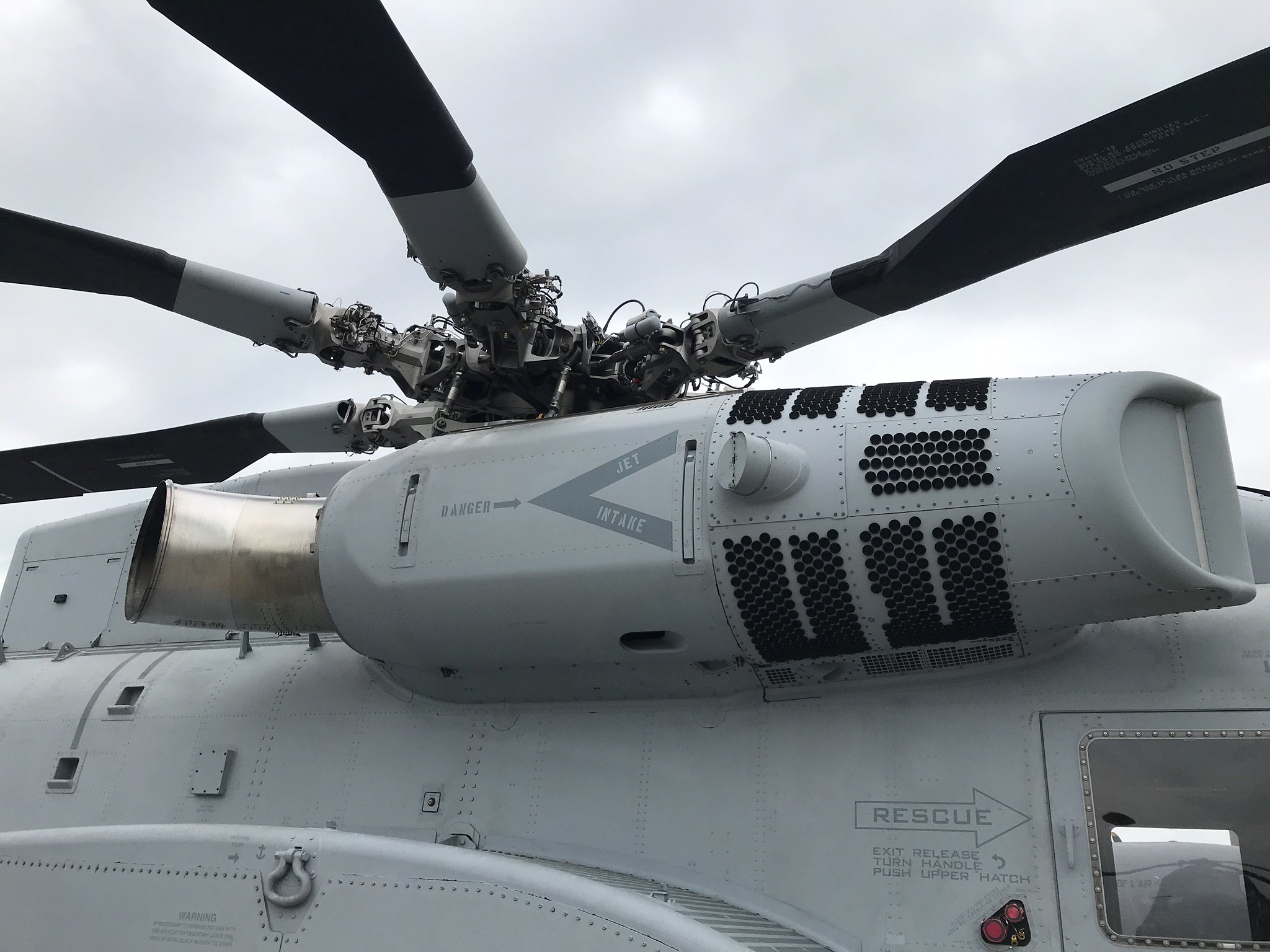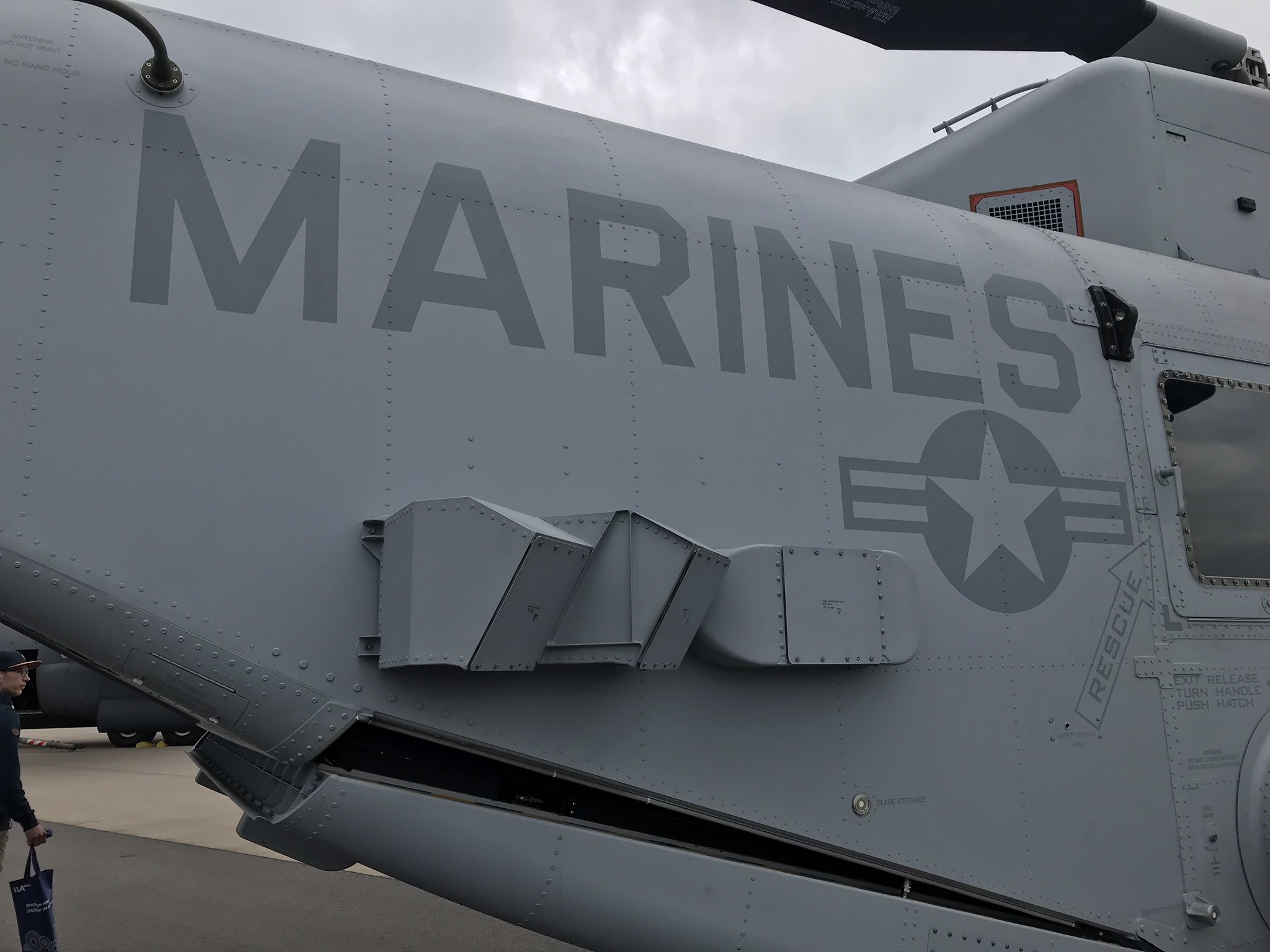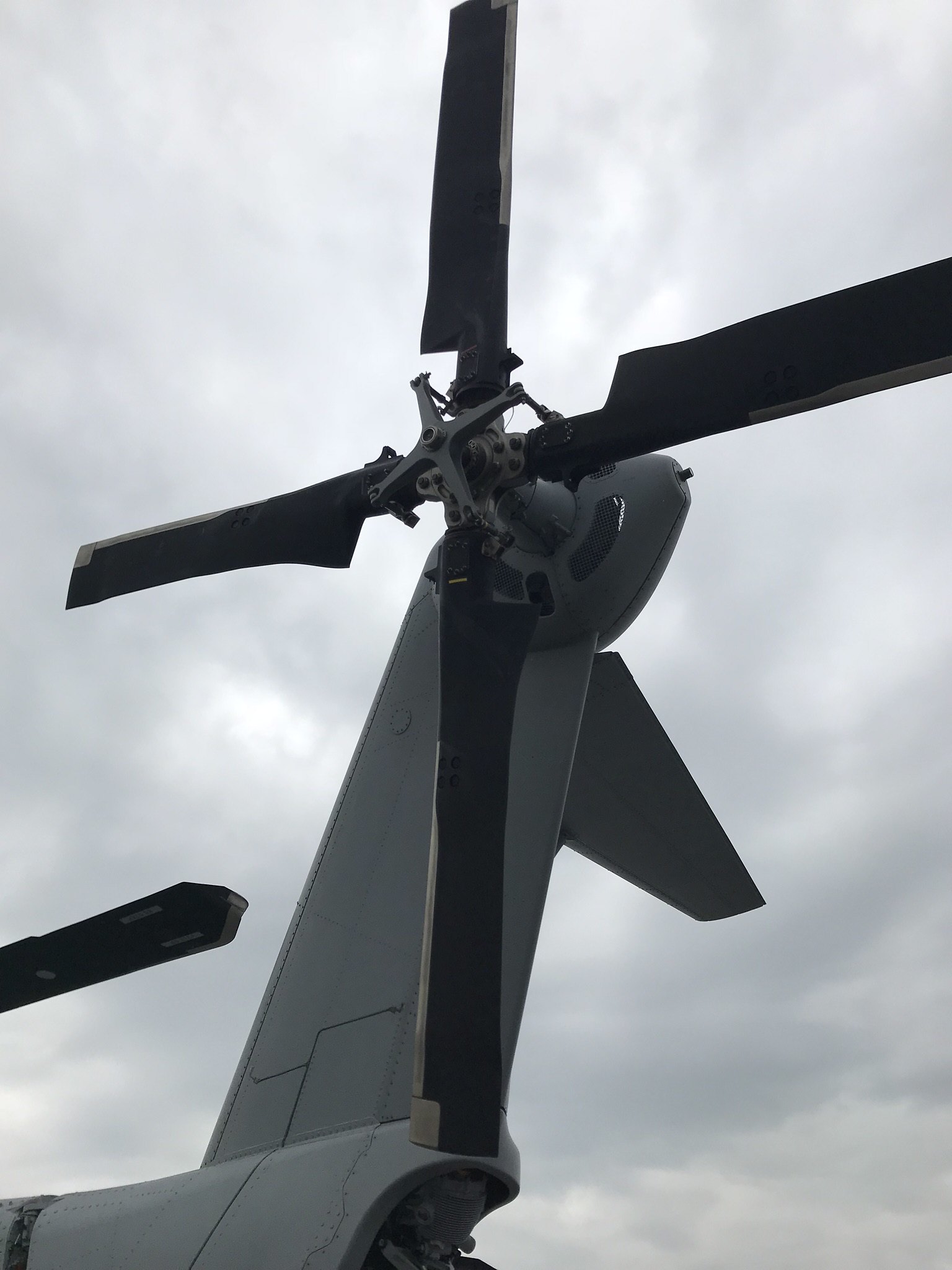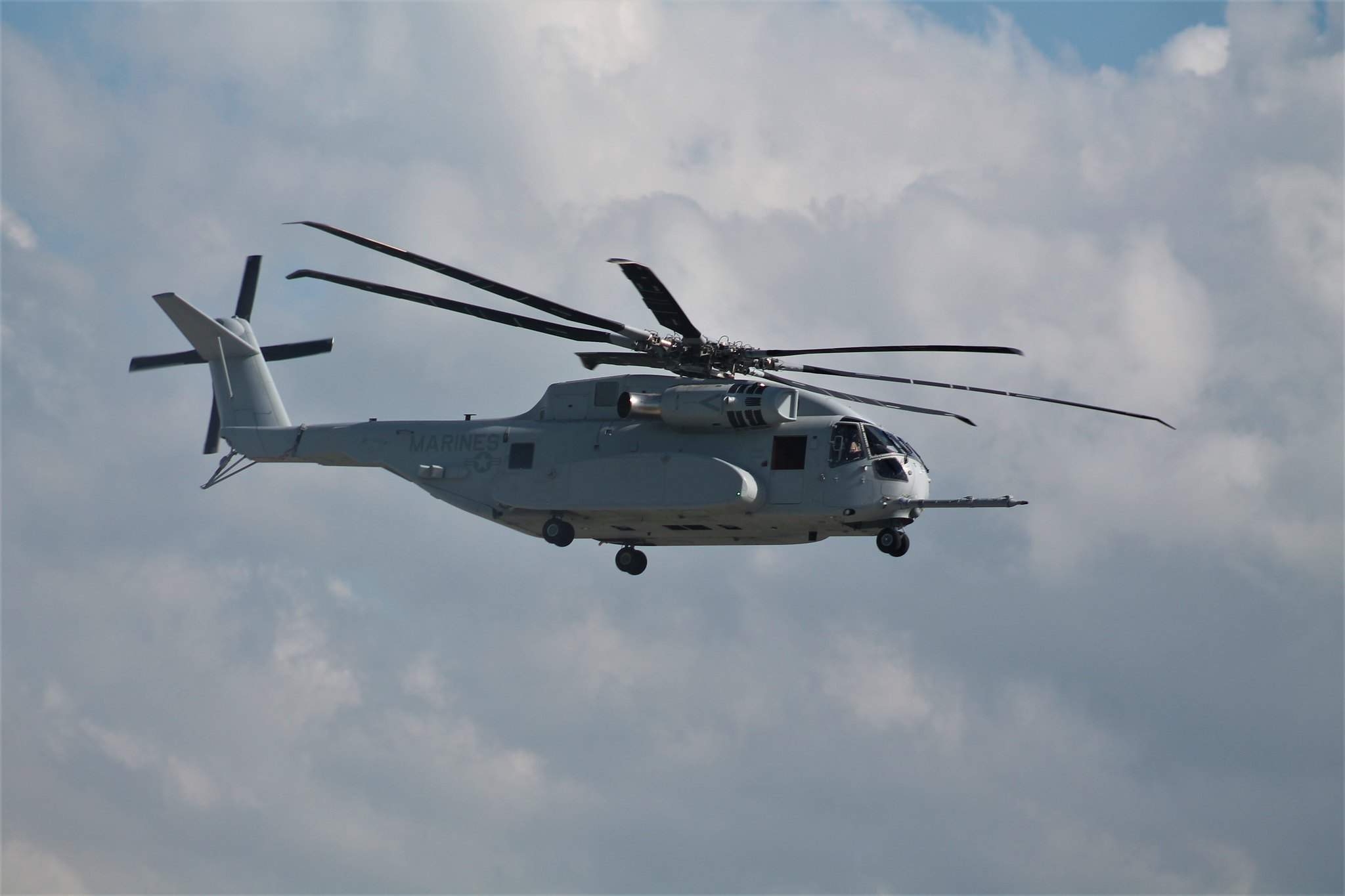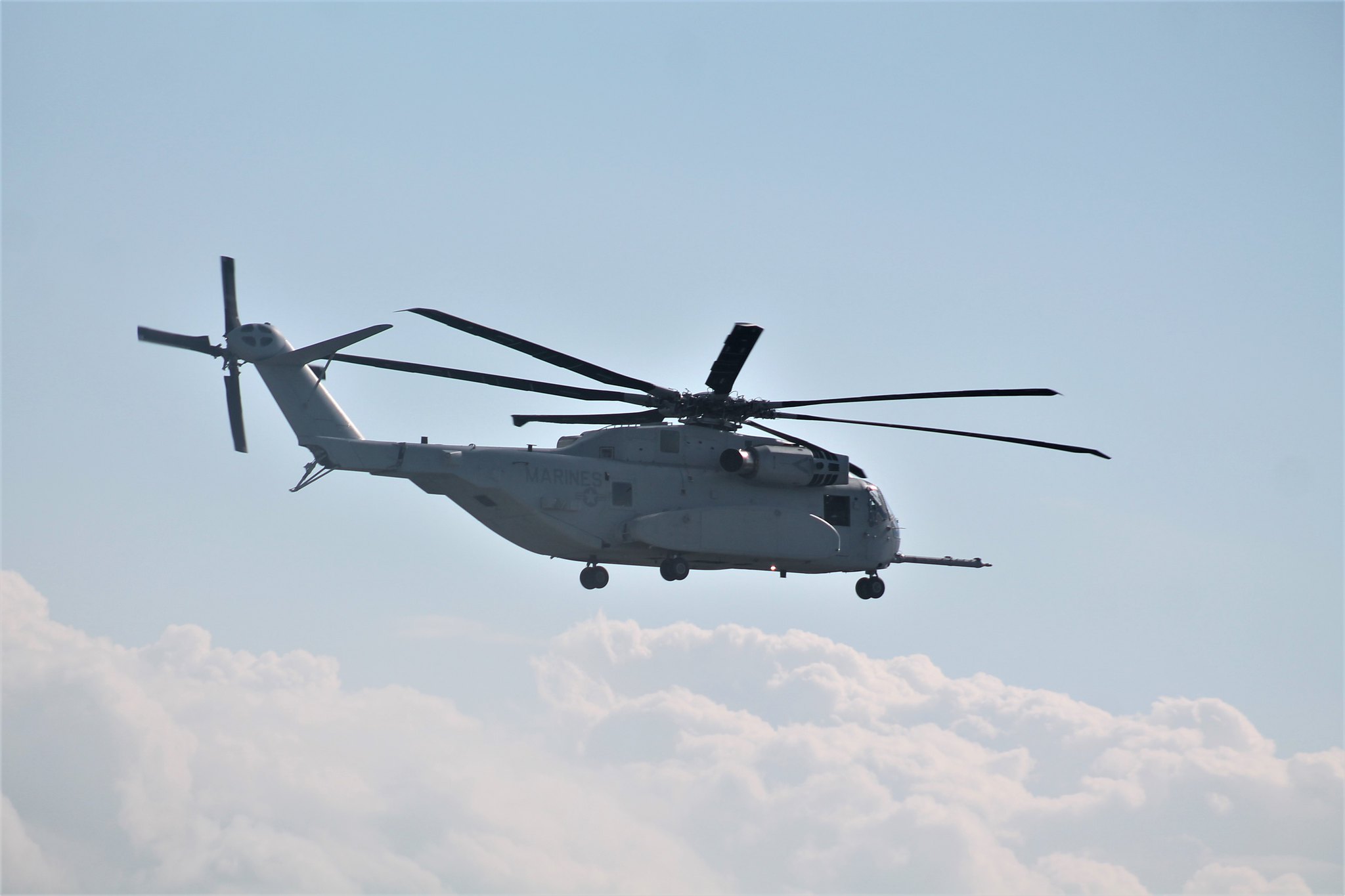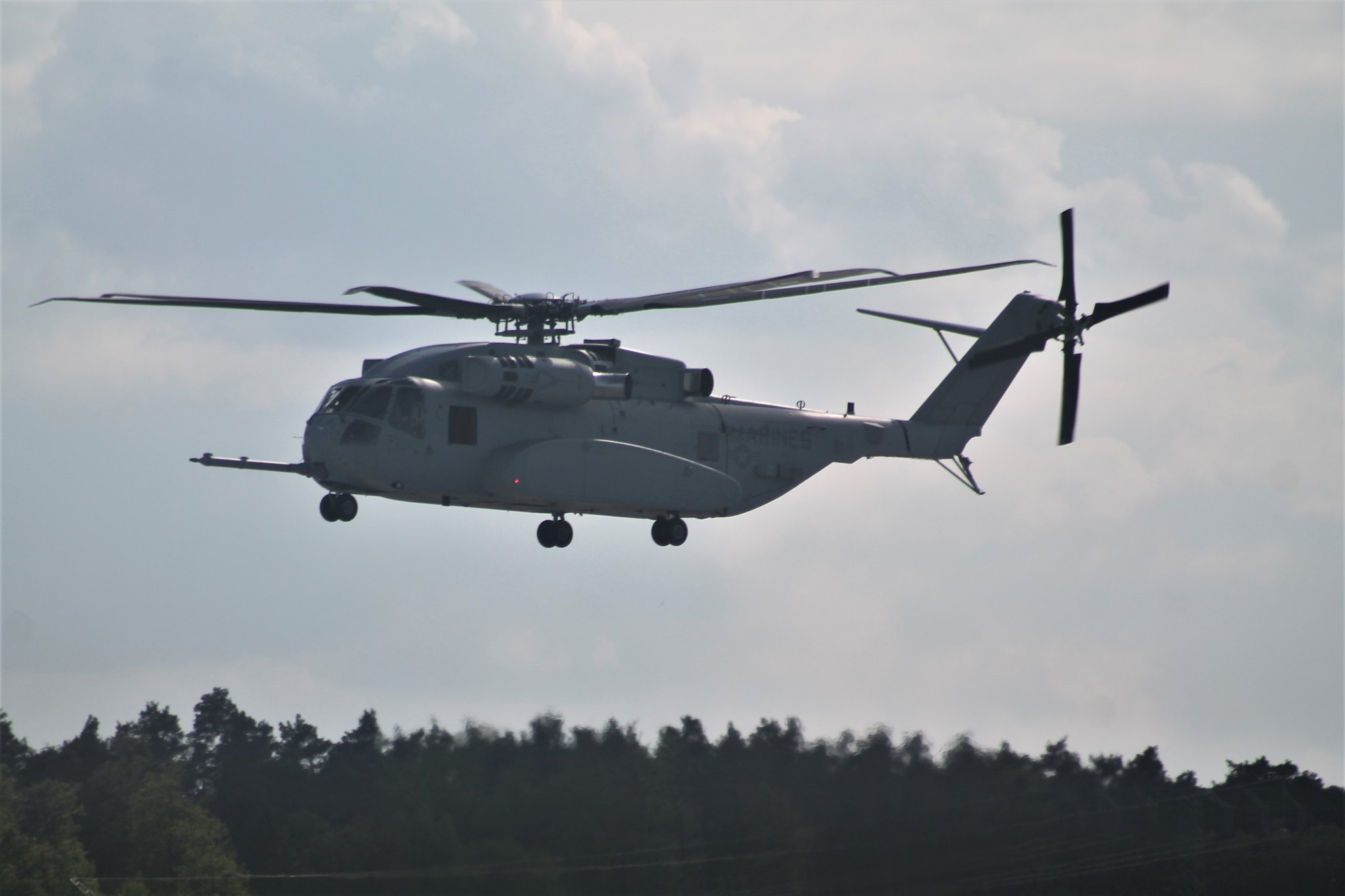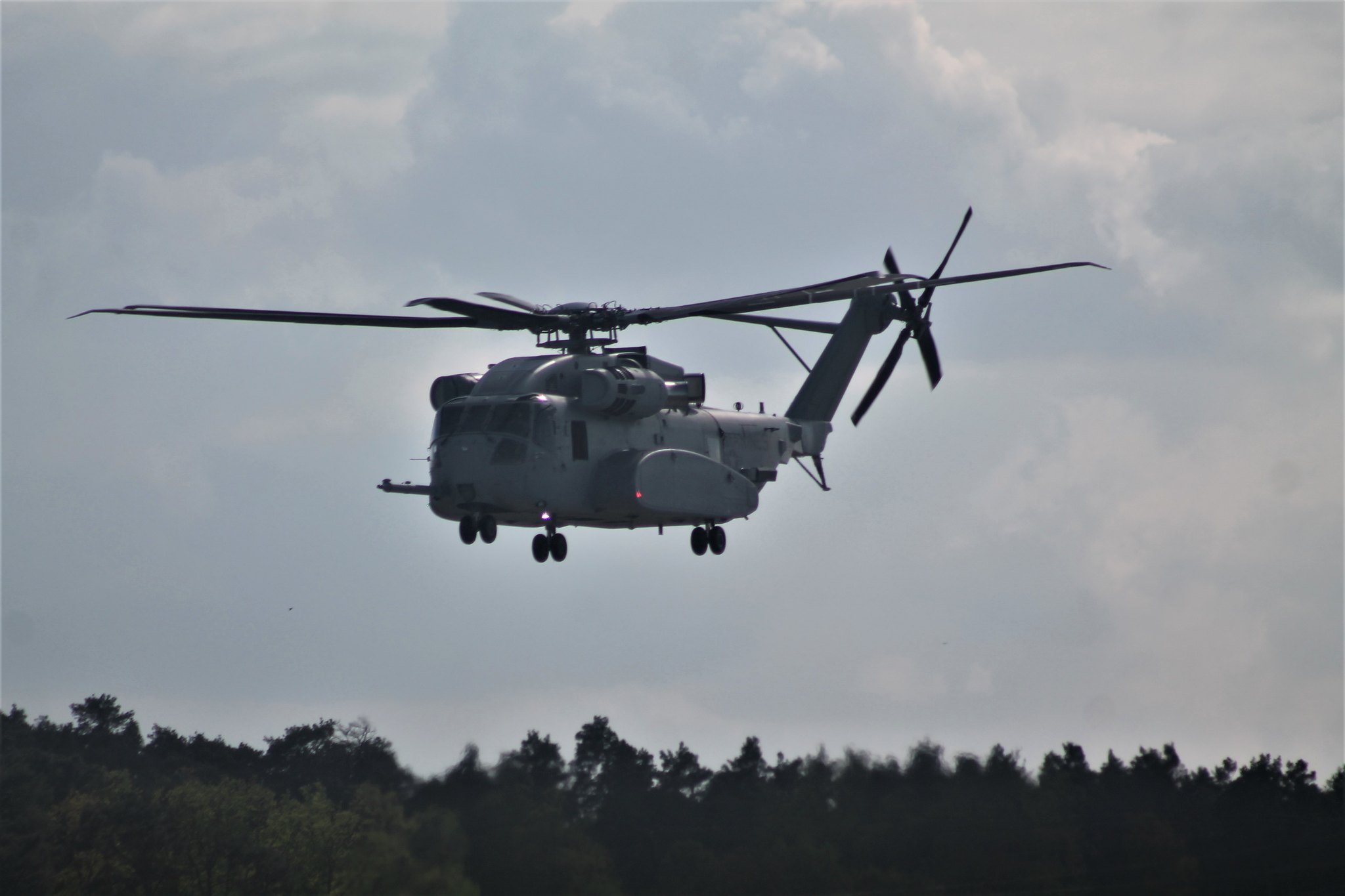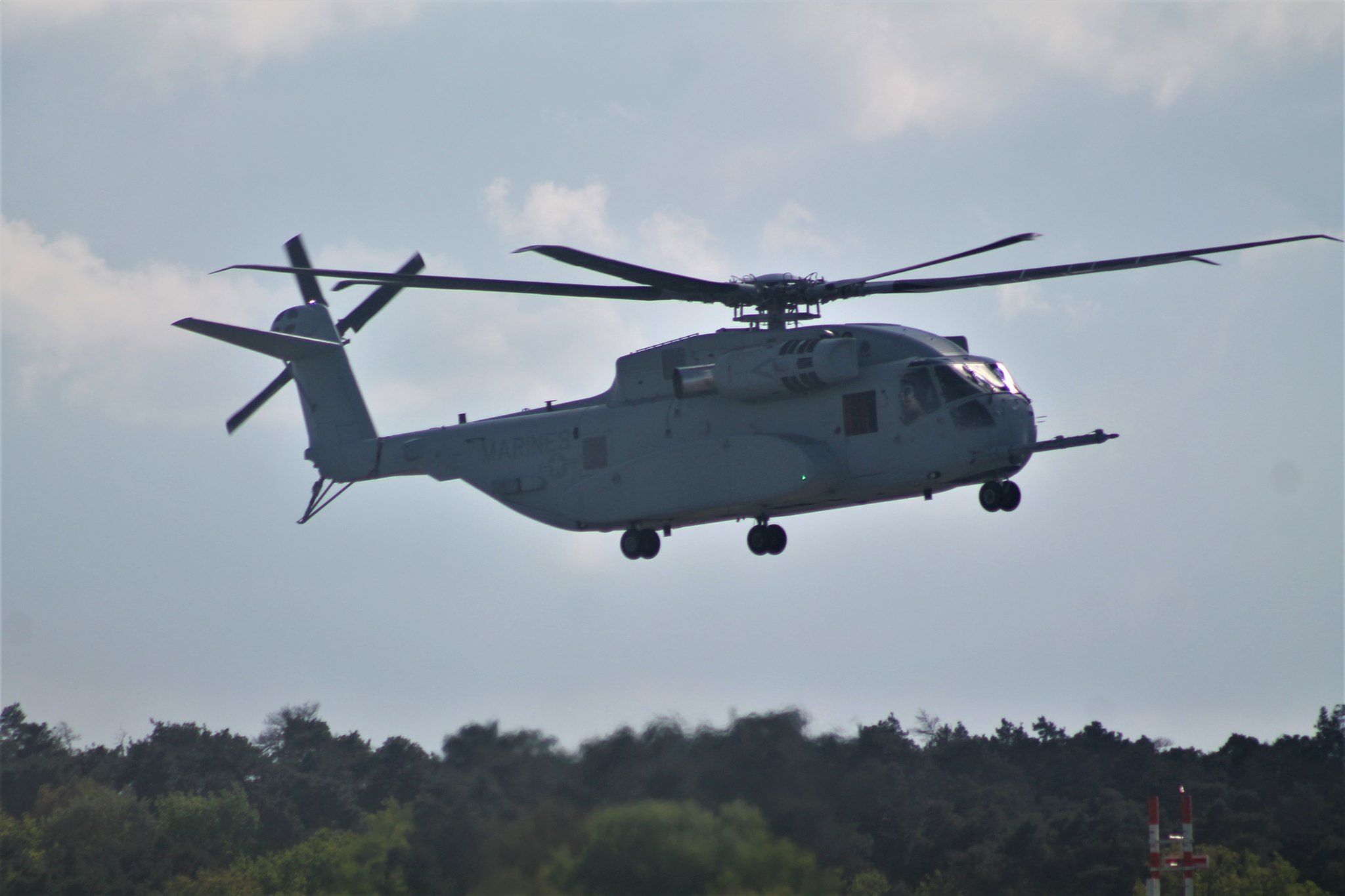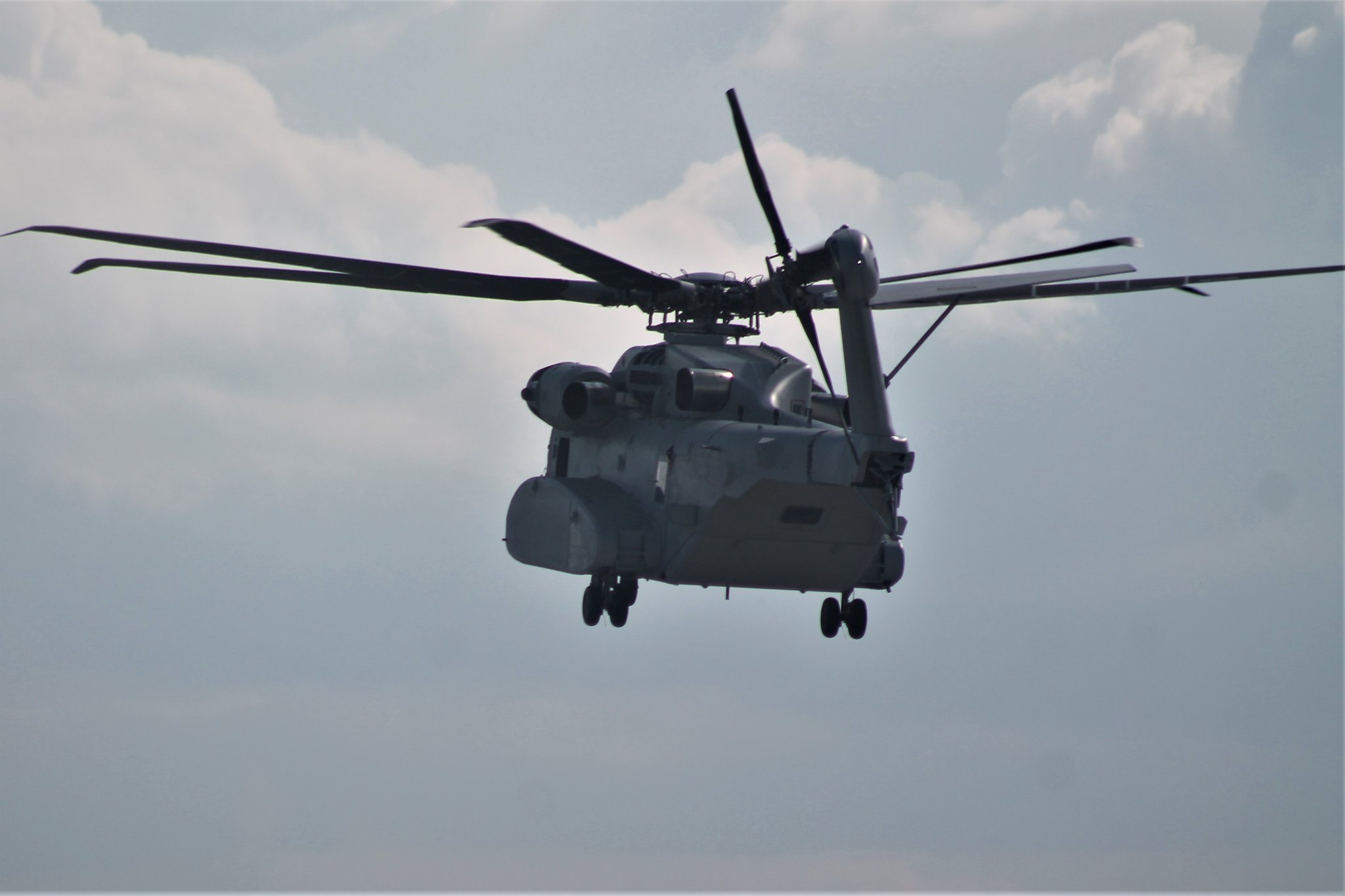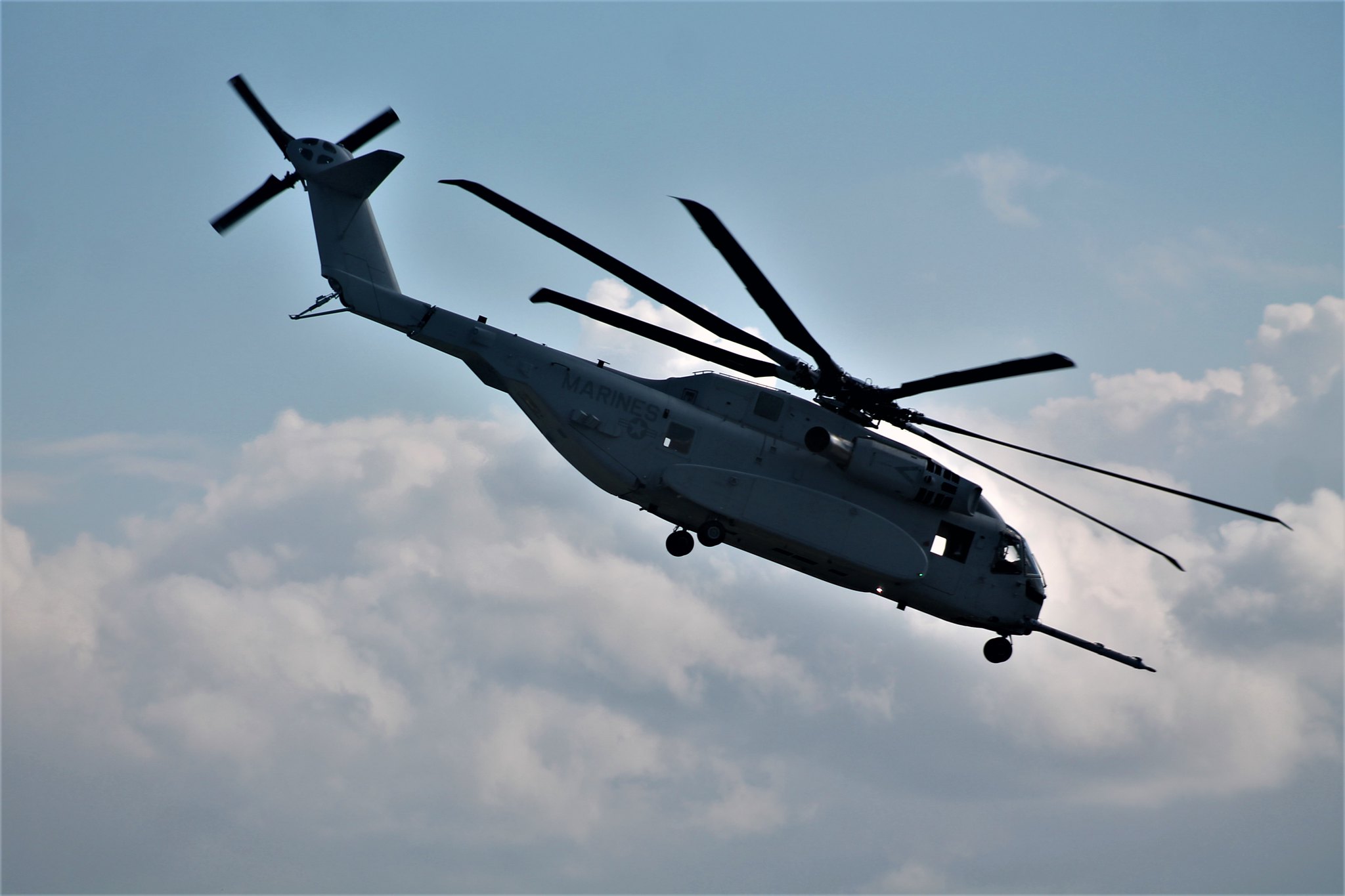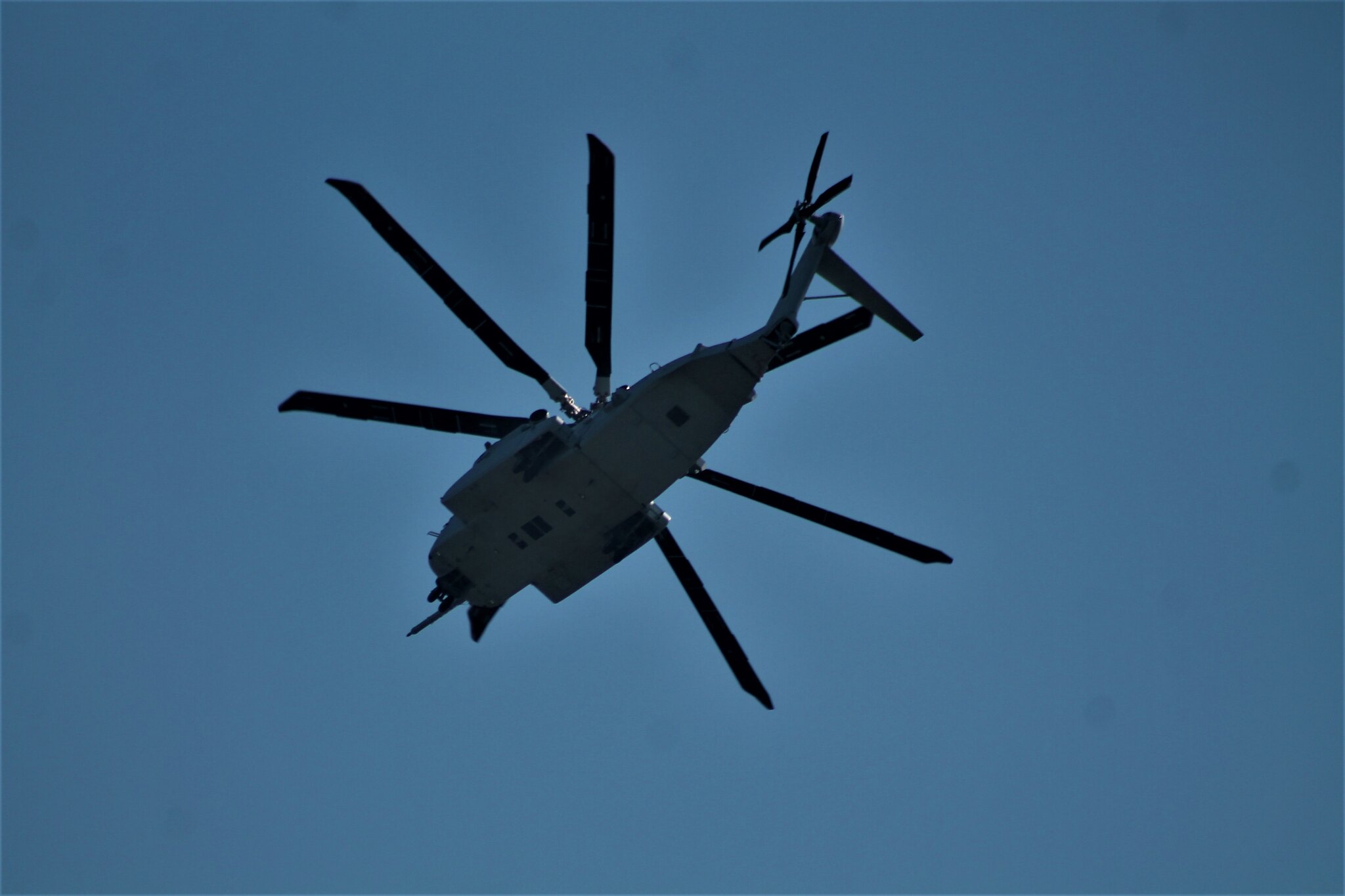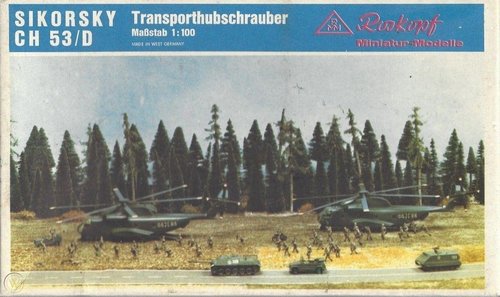You are using an out of date browser. It may not display this or other websites correctly.
You should upgrade or use an alternative browser.
You should upgrade or use an alternative browser.
Sikorsky CH-53K King Stallion Heavy Lift Replacement (HLR)
- Thread starter Triton
- Start date
Sikorsky CH-53K Completes Critical Flight Envelope Expansion with 36,000-pound External Lift
Published on Mar 7, 2018
The Sikorsky CH-53K King Stallion completed an external lift of a 36,000-pound payload at the Sikorsky Development Flight Center, achieving a maximum weight on the single center point cargo hook. Learn more: http://lmt.co/2FoXH3f
Published on Mar 7, 2018
The Sikorsky CH-53K King Stallion completed an external lift of a 36,000-pound payload at the Sikorsky Development Flight Center, achieving a maximum weight on the single center point cargo hook. Learn more: http://lmt.co/2FoXH3f
Adventurer104
Retired Texas Peace Officer
- Joined
- 5 July 2013
- Messages
- 49
- Reaction score
- 18
While we’re here. Can someone point me to details on angling the rear rotar down to increase lift.
I’ve only seen a casual mention, not a detailed explanation suitable for a tired old retired cop.
Thanks in advance!
I’ve only seen a casual mention, not a detailed explanation suitable for a tired old retired cop.
Thanks in advance!
marauder2048
"I should really just relax"
- Joined
- 19 November 2013
- Messages
- 3,157
- Reaction score
- 926
TomS said:It is. I can't find a folded pic of the King Stallion anywhere. I mean, they must have folded the beast by this point in testing.
I did find one rendering.
Getting closer...
Attachments
- Joined
- 3 June 2006
- Messages
- 3,094
- Reaction score
- 3,966
Video:CH-53K Heads to ILA Berlin | Time-Lapse
In collaboration with the Naval Air Systems Command (NAVAIR), Sikorsky is bringing the CH-53K helicopter to ILA Berlin Air Show. This historic milestone marks the King Stallion’s international debut, and the very first time this heavy lifter will display its capability to the German public.
See how we got the King Stallion to the show in this video!
Last edited by a moderator:
- Joined
- 4 May 2008
- Messages
- 2,439
- Reaction score
- 762
Does anyone know whether the German CH-53s had retained the power folding features? I mean, there's a lot of weight that goes into the actuators. I guess it's useful when you're trying to get inside a cargo plane, but that could probably be achieved manually given how infrequent that happens...
- Joined
- 16 April 2008
- Messages
- 9,618
- Reaction score
- 14,530
AeroFranz said:Does anyone know whether the German CH-53s had retained the power folding features? I mean, there's a lot of weight that goes into the actuators. I guess it's useful when you're trying to get inside a cargo plane, but that could probably be achieved manually given how infrequent that happens...
They kept it in the CH-53G. Here's a video showing the fold mechanism in action:
seruriermarshal
ACCESS: Top Secret
- Joined
- 4 May 2008
- Messages
- 1,180
- Reaction score
- 574
Marine Corps receives first CH-53K King Stallion
May 16, 2018 |
Justin Katz
The Marine Corps today received the first CH-53K King Stallion heavy-lift helicopter at Marine Corps Air Station New River, NC, according to a service statement.
The service will begin an assessment on the maintenance, sustainment and overall aviation logistics support of the aircraft in a supportability test plan, the statement said.
Designated System Demonstration Test Article 3, the aircraft will not fly for the government as a regular asset until summer 2019.
CH-53K prime contract Sikorsky expects to deliver the second helicopter in early 2019, according to a company statement.
The King Stallion is the replacement for the CH-53E Super Stallion and is expected to carry three times the load of its predecessor. The first eight aircraft of the program of record -- which will purchase 200 helicopters -- are under contract with some of those aircraft scheduled to be delivered this year. The service will transition to eight active duty squadrons, one training squadron and one reserve squadron to support operational requirements.
"I am very proud of the work accomplished to deliver the most powerful helicopter ever designed into the hands of our Marines," said Lt. Gen. Steven Rudder, deputy commandant for aviation. "And confident in the teamwork and dedication in this program which will carry us to [initial operational capability]."
The Marine Corps expects the CH-53K to reach initial operational capability in December 2019.
May 16, 2018 |
Justin Katz
The Marine Corps today received the first CH-53K King Stallion heavy-lift helicopter at Marine Corps Air Station New River, NC, according to a service statement.
The service will begin an assessment on the maintenance, sustainment and overall aviation logistics support of the aircraft in a supportability test plan, the statement said.
Designated System Demonstration Test Article 3, the aircraft will not fly for the government as a regular asset until summer 2019.
CH-53K prime contract Sikorsky expects to deliver the second helicopter in early 2019, according to a company statement.
The King Stallion is the replacement for the CH-53E Super Stallion and is expected to carry three times the load of its predecessor. The first eight aircraft of the program of record -- which will purchase 200 helicopters -- are under contract with some of those aircraft scheduled to be delivered this year. The service will transition to eight active duty squadrons, one training squadron and one reserve squadron to support operational requirements.
"I am very proud of the work accomplished to deliver the most powerful helicopter ever designed into the hands of our Marines," said Lt. Gen. Steven Rudder, deputy commandant for aviation. "And confident in the teamwork and dedication in this program which will carry us to [initial operational capability]."
The Marine Corps expects the CH-53K to reach initial operational capability in December 2019.
NeilChapman
Interested 3rd party
- Joined
- 14 December 2015
- Messages
- 1,317
- Reaction score
- 547
To bad they couldn't get it there for the airshow the other weekend.
seruriermarshal
ACCESS: Top Secret
- Joined
- 4 May 2008
- Messages
- 1,180
- Reaction score
- 574
The U.S. Senate Armed Services Committee has included language in the 2019 National Defense Authorization Act asking the U.S. Navy to submit a report on the “feasibility and impact of recapitalizing the MH–53E fleet with a derivative of CH-53K.”


Lawmakers suggest replacing MH-53E with CH-53K - Alert 5
The U.S. Senate Armed Services Committee has included language in the 2019 National Defense Authorization Act asking the U.S. Navy to submit a report on the “feasibility and impact of recapitalizing the MH–53E fleet with a derivative of CH-53K.” “The Committee recognizes that the CH-53K...
alert5.com
Nice video of brownout condition landing test
Notice the recirculation flow (perpendicular to ground)
View: https://youtu.be/RODMMX3SOBs
Notice the recirculation flow (perpendicular to ground)
Not related directly to the King but still could stain any future sales prospect (I wonder if this has any relation with the recent swap at the head of LM).

 www.verticalmag.com
www.verticalmag.com
Investigators found that the initial fire was caused by disintegration of a power relay in the left engine.
“Despite the fact that this malfunction had been identified by the manufacturer, the information was never passed along to the air force,” the IAF said in a statement. “The investigation team also found that the air force’s maintenance procedures did not find the malfunction in the relay.”

Israel faults relay switch, Lockheed for CH-53 fire
The Israel Air Force faulted Lockheed Martin for failing to share information about a component defect that caused an IAF CH-53 to be destroyed by fire in November 2019.

CH-53K King Stallion demonstrates long-range logistic support capabilities with first, successful air refueling tests
CH-53K King Stallion demonstrates long-range logistic support capabilities with first, successful air refueling tests
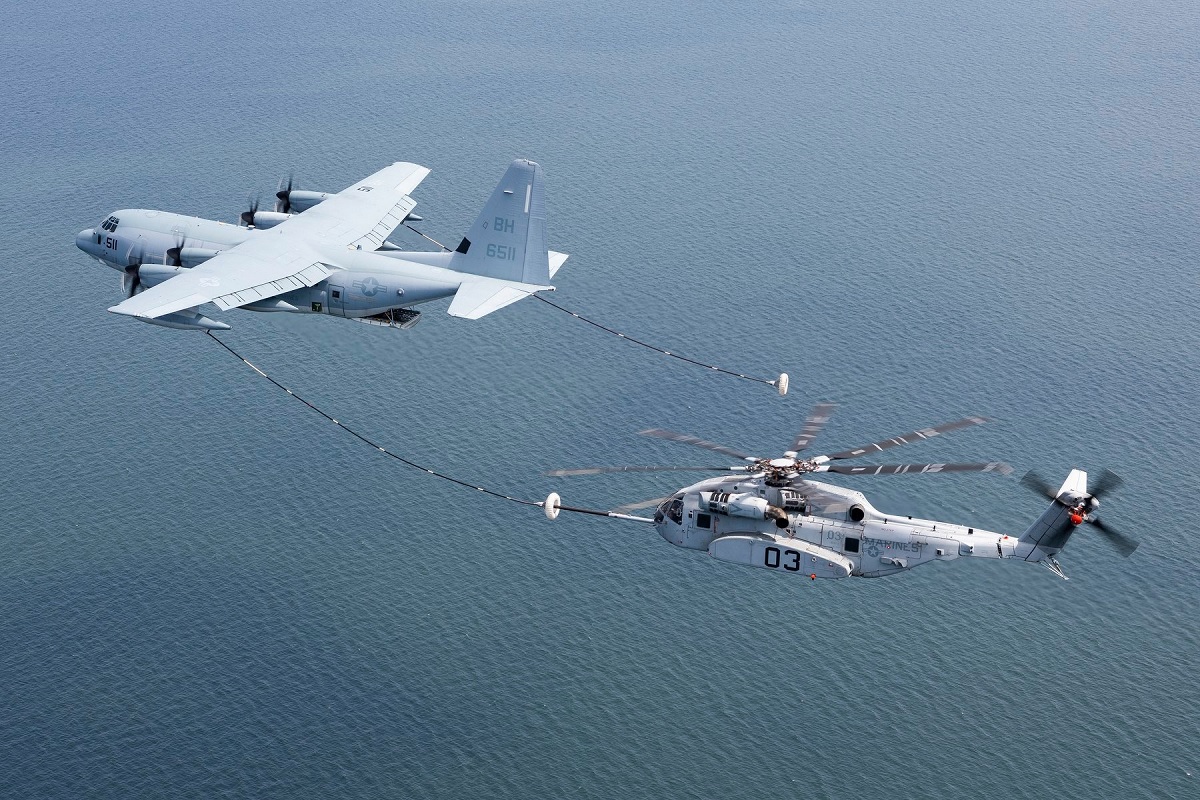

Manufacturing a CH-53K: The Central Role of Digital Thread Production - Second Line of Defense
By Robbin Laird Sikorsky is working with NAVAIR and the USMC to deliver a new build heavy lift helicopter, the CH-53K. This is a digital aircraft, while its predecessor the CH-53E, is a mechanical aircraft. What this means is that the aircraft is digitally designed and manufactured by means of a...
 sldinfo.com
sldinfo.com
- Joined
- 27 September 2006
- Messages
- 6,418
- Reaction score
- 6,827
I am a great fan of the German Army CH53s after buying the pair shown below in 1/100 scale complete with infantry and Kraka light vehicles in a Munich Toyshop back in the 70s when the poor old RAF kept being stopped from getting CH47s.
Didnt expect them to still be soldiering on in the 21st C and assumed some snazzy Eurocopter would have replaced them by now.
Didnt expect them to still be soldiering on in the 21st C and assumed some snazzy Eurocopter would have replaced them by now.
Attachments
But for now, the core point is simple – the K needs to come into the USMC-Navy team as soon as possible to enable the shift in concepts of operations required to deal with the new strategic environment.
And if the CH-53K became part of the joint team, the question of cost is very manageable.
By producing more aircraft, the cost curve comes down. And shaping a more effective cost curve is a significant challenge which the program is addressing.
CH-53K Sea Trials: One Step Closer to First Deployment - Second Line of Defense
Last month, the Marine Corps wrapped up its first sea trials with the new CH-53K King Stallion. In an article by Megan Eckstein published by USNI News on June 25, 2020, the crossing of one of the “last big items on the to do list before the heavy lift helicopter program can turn the aircraft […]
 sldinfo.com
sldinfo.com
Lt. Col. Fred “NOVAC” Neubert, department head and government lead test pilot for the CH-53K program, agreed with Foxton’s assessment. “There may be other aircraft out there with similar performance capabilities, but I have not flown a helicopter with the outstanding handling qualities that the 53K provides,” Neubert said.
The aircraft performed so well, in fact, that the test team succeeded in testing nearly all of the aircraft’s launch and recovery envelope expansion — the team’s primary test objective — within the first seven days of the trip, leaving the second week to thoroughly pursue the other objectives. As a result, the test team was able to devote more time to identifying refinements and minor improvements to suggest to the manufacturer than it otherwise would have had. Foxton recalled how, during one post-flight debriefing, one of the team’s veteran flight engineers pointed out, “Do you realize we just spent 15 minutes talking about whether we could improve the windshield wipers?”
“We were able to focus on those little things because the big things took care of themselves,” Foxton said.
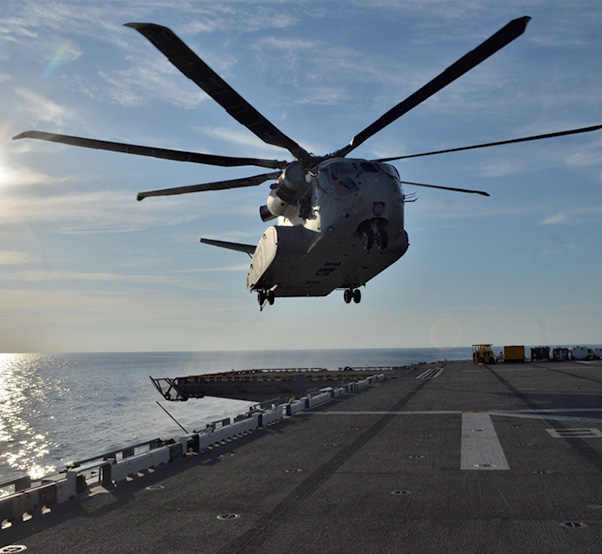
CH-53K Integrated Test Team stretches King Stallion’s sea legs
A team of pilots and engineers from Air Test and Evaluation Squadron (HX) 21 based at Naval Air Station Patuxent River, Md., recently completed a crucial series
Anderman
ACCESS: Secret
- Joined
- 30 September 2006
- Messages
- 257
- Reaction score
- 192
The current STH project/competition of the Bundeswehr is cancelled to expensive

 www.flugrevue.de
www.flugrevue.de

Bundeswehr stoppt STH-Wettbewerb
Das Verteidigungsministerium hat heute mitgeteilt, dass "das Vergabeverfahren im Projekt 'Schwerer Transporthubschrauber (STH)' aufgehoben wurde".
- Joined
- 3 June 2006
- Messages
- 3,094
- Reaction score
- 3,966
My sources at the Bundeswehr say, that the costs of this competition were nearly four times more as than for other NATO countries. I haven't got the figures, but a lot of military aviation expertes are comparing it to the Dutch Chinook procurement.German defense spending has one wondering if Germans prefer (P)russia to D-land. Do Germans hate NATO more than they care for their chilldren?..some deal could have been worked out.
Anderman
ACCESS: Secret
- Joined
- 30 September 2006
- Messages
- 257
- Reaction score
- 192
German defense spending has one wondering ....some deal could have been worked out.The current STH project/competition of the Bundeswehr is cancelled to expensive

Bundeswehr stoppt STH-Wettbewerb
Das Verteidigungsministerium hat heute mitgeteilt, dass "das Vergabeverfahren im Projekt 'Schwerer Transporthubschrauber (STH)' aufgehoben wurde".www.flugrevue.de
The german MoD still wants to replace the current CH-53 fleet with a new helicopter by 2030. So only the current project is cancelled there will be a new one.
Last edited by a moderator:
An all new heavy transport helicopter in service by 2030 at a cost lower than the CH53K? A joint modernized Mil-26 with German engines/transmission/avionics is the only thing that might cost less and meet that schedule.
Similar story:

 www.defensenews.com
www.defensenews.com

Germany walks away from Lockheed, Boeing cargo helicopter offers
The surprise decision halts an acquisition race that was scheduled to a see a contract awarded in 2021.
jsport
what do you know about surfing Major? you're from-
- Joined
- 27 July 2011
- Messages
- 7,741
- Reaction score
- 5,759
He argued the Defence Ministry had been naive in its approach to the much-needed acquisition. “A new competition alone won’t solve that problem,” he said.Similar story:

Germany walks away from Lockheed, Boeing cargo helicopter offers
The surprise decision halts an acquisition race that was scheduled to a see a contract awarded in 2021.www.defensenews.com
Cant beleive I agree w/ a Green but he is correct, what might start a path for EADS, is a board member publicly exclaiming that EADS will introduce a profit motive into their military engineering infrastructure. Engineers that perform are rewarded, potentially handsomely, and others who dont perform get layed off.
- Joined
- 11 March 2012
- Messages
- 3,251
- Reaction score
- 3,179
German Air Force ... executives demanding guarantees of number of operational readiness ....
These cost increases reflect a radically new style of accounting, similar to the new style of accounting that has driven up the cost of F-35 purchases.
Instead of the old system of barely scrapping together enough dollars/deutschmarks/euros to purchase a fleet of flying machines, now gov't bean-counters want estimates of the entire cost of a fleet ... over a 40-year period!
These new estimates must include purchase cost, fuel cost, man-power costs, spare parts, overhaul costs, air crew training costs, storage, hangaring, groung support equipment, etc.
This reminds me of a conversation with a fellow CF-18 technician who got posted to Canadian National Defence Headquarters and was assigned to order new spare parts for the RCAF P-3 Aurora program. He reviewed US Navy statistics and concluded that the RCAF would need 100 nose wheels per year. His boss was horrified and told him to only order 25 nose-wheels .... "But! But! But!"
"Don't worry" his boss replied "When we run out of nose-wheels, there are emergency and flight-safety funds available to buy enough nose-wheels to keep the fleet flying."
Gov't civilian accountants are tired of that style of accounting and want to hear realistic estimates of the total cost of flying a fleet for 40 years.
These cost increases reflect a radically new style of accounting, similar to the new style of accounting that has driven up the cost of F-35 purchases.
Instead of the old system of barely scrapping together enough dollars/deutschmarks/euros to purchase a fleet of flying machines, now gov't bean-counters want estimates of the entire cost of a fleet ... over a 40-year period!
These new estimates must include purchase cost, fuel cost, man-power costs, spare parts, overhaul costs, air crew training costs, storage, hangaring, groung support equipment, etc.
This reminds me of a conversation with a fellow CF-18 technician who got posted to Canadian National Defence Headquarters and was assigned to order new spare parts for the RCAF P-3 Aurora program. He reviewed US Navy statistics and concluded that the RCAF would need 100 nose wheels per year. His boss was horrified and told him to only order 25 nose-wheels .... "But! But! But!"
"Don't worry" his boss replied "When we run out of nose-wheels, there are emergency and flight-safety funds available to buy enough nose-wheels to keep the fleet flying."
Gov't civilian accountants are tired of that style of accounting and want to hear realistic estimates of the total cost of flying a fleet for 40 years.
- Joined
- 11 March 2012
- Messages
- 3,251
- Reaction score
- 3,179
While we’re here. Can someone point me to details on angling the rear rotar down to increase lift.
I’ve only seen a casual mention, not a detailed explanation suitable for a tired old retired cop.
Thanks in advance!
H-60 Blackhawk uses a similar titled tail rotor to contribute a bit more lift. I forget the exact numbers, but the tail rotor only provides about 10 percent more lift. The extra tail rotor lift comes in really handy when cargo is not properly balanced (e.g. with 3 cargo hooks) and the tail rotor relieves pitch trim loads on the main rotor. When you are flying close to the edge of the envelope (e.g. high and hot in Afghan mountains), every little bit of extra lift comes in handy.
- Joined
- 11 March 2012
- Messages
- 3,251
- Reaction score
- 3,179
Does anyone know whether the German CH-53s had retained the power folding features? I mean, there's a lot of weight that goes into the actuators. I guess it's useful when you're trying to get inside a cargo plane, but that could probably be achieved manually given how infrequent that happens...
I doubt if Bundeswher CH-53Ds retain power-fold mechanisms, but they can probably still manually fold. Removing power fold actuators reduces empty weight by a few hundred pounds/kilograms, freeing up lift capacity for more fuel or more poor bloody infantry.
In comparison, the Royal Canadian Navy always folded Sikorsky Sea Kings even when storing them in hangars ashore because a folded helicopter only needs about 1/3 the floor space.
OTOH Even though they were purchased a couple of decades after Canada retired our last aircraft carrier, CF-18 Hornet fighters retained all the wing-fold and carrier-related launch equipment because they were so deeply integrated with software. It would have been impossible for the RCAF to simply deleted carrier-specific components without hopelessly confusing flight computers. We usually folded wings before stowing in concrete hangars because folding helped reduce floor space.
Too bad McDonnel-Douglas never perfected the promised CF-18L with simplified landing gear, non-folding wings, etc. A lighter and simpler airframe would have saved: Australia, Finland, Spain, Switzerland, etc. millions of gallons/litres of fuel and umpteen million dollars/euros, etc. in spare parts.
marauder2048
"I should really just relax"
- Joined
- 19 November 2013
- Messages
- 3,157
- Reaction score
- 926
Instead of the old system of barely scrapping together enough dollars/deutschmarks/euros to purchase a fleet of flying machines, now gov't bean-counters want estimates of the entire cost of a fleet ... over a 40-year period!
Where did you get 40 years? I ask because the number that was previously floating around was 30 years which
is consistent with the CH-53K SAR and closish the CH-47 Block II SAR.
- Joined
- 11 March 2012
- Messages
- 3,251
- Reaction score
- 3,179
Sorry dude.
My inaccurate "40 years" came from an old memory.
Keep in mind that the Canadian Sea King helicopter and CC-130 Hercules fleets served for 50-ish years.
Gov't accountants hate "surprise" requests for emergency funding to keep fleets flying.
My inaccurate "40 years" came from an old memory.
Keep in mind that the Canadian Sea King helicopter and CC-130 Hercules fleets served for 50-ish years.
Gov't accountants hate "surprise" requests for emergency funding to keep fleets flying.
Colonial-Marine
UAVs are now friend, drones are the real enemy.
- Joined
- 5 October 2009
- Messages
- 1,475
- Reaction score
- 1,331
I thought that international operators of the F/A-18 went with the navalized variant because the "up front" cost was a bit cheaper? I'd imagine the land-based variant would have saved money in the long run however.Too bad McDonnel-Douglas never perfected the promised CF-18L with simplified landing gear, non-folding wings, etc. A lighter and simpler airframe would have saved: Australia, Finland, Spain, Switzerland, etc. millions of gallons/litres of fuel and umpteen million dollars/euros, etc. in spare parts.
- Joined
- 11 February 2007
- Messages
- 2,580
- Reaction score
- 4,402
Cant beleive I agree w/ a Green but he is correct, what might start a path for EADS, is a board member publicly exclaiming that EADS will introduce a profit motive into their military engineering infrastructure. Engineers that perform are rewarded, potentially handsomely, and others who dont perform get layed off.
This is a classic example of why 'blame the engineers' is rarely a solution. What the reports make clear is that the project suffered the death of a thousand requirement-creep cuts that pushed an affordable requirement to non-affordable*. And there's nothing the engineers on the ground can do to fix that. Often enough it's not even clear whether the requirements are achievable until you've done significant work. So if you put your best engineer on a pie-in-the-sky requirement, and it turns out to be unachievable, do you really want to kick them out the door?
* I suspect the definition of affordable vs non-affordable has also shifted given the massive unplanned-for coronavirus expenditure, STH may simply be the first of many projects to be axed over the next couple of years.
Similar threads
-
-
-
-
What if all three Canadian Services bought Sikorsky S-61 in 1963?
- Started by riggerrob
- Replies: 21
-

